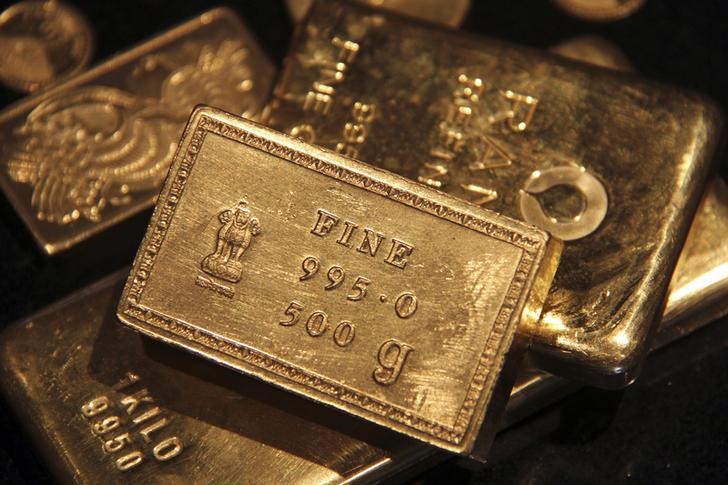Bernstein says Donald Trump wants this stock to go up
By Barani Krishnan
Investing.com -- This may be the moment gold bulls have been awaiting.
Both futures and physical spot prices of the yellow metal jumped about 2% on Tuesday to hit near six-month highs above the key $1,800 an ounce level as U.S. consumer price data indicated a steady cooling in inflation from 40-year highs.
Gold futures’ benchmark February contract on New York’s Comex was at $1,826.95 by 10:32 ET (15:32 GMT), up $34.65, or almost 2%. The session peak of $1,836.80 was the highest for Comex gold since June 27, marking a near six-month high.
The spot price of gold, which is more closely followed than futures by some traders, was at $1,814.87 an ounce, up $33.44, or around 2%.
“For spot gold, at this point, $1,810-$1,800-$1,790 become the immediate support zone and consolidated price action is looking at the next major resistance and target of $1,845,” said Sunil Kumar Dixit, chief technical strategist at SKCharting.com.
Gold has gained some $200 from low $1,600 levels reached in early October. Over the past seven weeks, it has declined in only one week.
The rebound has been facilitated by the tumble in the Dollar Index, which has lost almost 8% of its value since October. On Tuesday alone, the index, which pits the dollar against a basket of six currencies, fell 1.4%, the most in a day since November 11.
The dollar’s latest slide came as U.S. consumer prices rose by 7.1% in the 12 months to November, the Labor Department announced on Tuesday, indicating the smallest inflationary growth in almost a year and marking a victory for the Federal Reserve’s plans to slow down rate hikes after aggressively hiking them to curb price pressures.
Economists had expected the Consumer Price Index for All Urban Consumers, known in short as the CPI, to expand by 7.3% in the year to November after a 7.7% annual growth reported by the Labor Department for October.
“This was the smallest 12-month increase since the period ending December 2021,” the department said in a statement.
The CPI hit a 40-year high in June when it grew at an annual rate of 9.1%. Since that peak, it has slowed every month, giving back a full 2% over the past five months.
“The previous report surprised to the downside,” economist Adam Button said in a post on the ForexLive forum, referring to the 0.5% annual drop for October. “This isn't quite as big of a surprise but it's in the same direction” in prodding the Fed to slow down on its rate hikes, said Button.
The Fed's target for inflation is just 2% per annum. In a bid to control surging prices, the central bank has added 375 basis points to interest rates since March via six rate hikes. Prior to that, interest rates peaked at just 25 basis points, as the Fed slashed them to nearly zero after the global COVID-19 outbreak in 2020.
The Fed, which executed four back-to-back jumbo rate hikes of 75 basis points from June through November, is now contemplating a 50-basis point increase at its Dec.14 rate decision.
More important than that is what the next rate hike for February 2023 is looking like: early indications by money markets on Tuesday suggested a 25-basis point hike. If true, it will match the March increase that began the Fed’s series of rate hikes for 2022.
